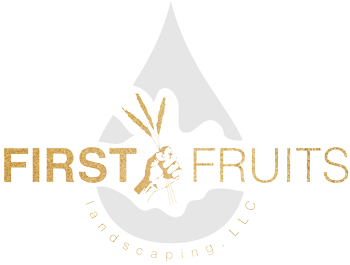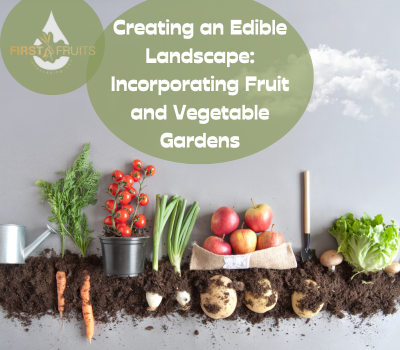Many people dream of having a beautiful, fruitful vegetable garden, luckily you can tie it into beautiful landscapes. In recent years, the concept of landscaping has evolved beyond the traditional ornamental gardens that adorn our outdoor spaces. Enter the trend of edible landscaping, a practice that marries the beauty of aesthetics with the functionality of producing fresh and organic fruits and vegetables. This innovative approach allows homeowners to transform their yards into lush, vibrant spaces that are not only visually appealing but also yield bountiful harvests. In this blog, we will explore the art of creating an edible landscape by incorporating fruit and vegetable gardens.
Creating an Edible Landscape: Incorporating Fruit and Vegetable Gardens
The Marriage of Beauty and Functionality
Edible landscaping is more than just planting a few tomato plants in a corner of your garden. It’s a thoughtful and intentional design approach that blends the principles of traditional landscaping with the practicality of food production. Imagine strolling through your garden and being able to pluck ripe strawberries, aromatic herbs, and crisp lettuce leaves right from the landscape itself. This fusion of aesthetics and sustenance adds an extra layer of satisfaction to your outdoor experience.
Designing Your Edible Paradise
Creating an edible landscape begins with careful planning and design. Just like any landscaping project, consider the layout, focal points, and the overall theme you wish to achieve. Integrating fruit and vegetable gardens doesn’t mean sacrificing visual appeal; it’s about integrating them seamlessly into your existing landscape. Here are some key steps to get you started:
1. Site Assessment:
Evaluate your space’s sunlight, soil quality, and drainage. Different fruits and vegetables have varying requirements, so it’s essential to match plant choices with suitable growing conditions.
2. Choosing Plants:
Select a mix of fruits, vegetables, herbs, and even edible flowers that thrive in your climate. Consider growth habits, colors, and textures to create an engaging visual tapestry.
3. Layout and Structure:
Design pathways, raised beds, trellises, and arbors that not only enhance the aesthetic but also provide practical support for your plants. Create focal points using decorative containers or artistic plant groupings.
4. Mixing with Ornamentals:
Blend edible plants with ornamental ones to create a harmonious and balanced look. Incorporate fruit-bearing shrubs, like blueberry bushes, alongside flowering perennials for a stunning contrast.
5. Seasonal Interest:
Plan for year-round interest by selecting plants that offer different benefits in various seasons. For instance, vibrant apple blossoms in spring, lush tomato plants in summer, and colorful Swiss chard in fall.
6. Water Efficiency:
Consider incorporating water-saving techniques such as drip irrigation or rainwater harvesting. Edible landscapes can be sustainable and environmentally friendly.
Caring for Your Edible Landscape
Maintaining an edible landscape requires ongoing care and attention, much like a traditional garden. Regular watering, mulching, pruning, and pest management are essential to ensure healthy growth and a productive harvest. Incorporating organic gardening practices will not only benefit your plants but also contribute to the overall health of your ecosystem.
Harvesting the Rewards
The true joy of an edible landscape lies in the rewards it provides. As your carefully curated plants flourish, you’ll begin to enjoy a cornucopia of fresh, flavorful produce. Beyond the culinary benefits, this harvest will foster a deeper connection to nature and a sense of accomplishment that arises from cultivating your food.
Educational Opportunities
Edible landscapes also offer educational opportunities for families and communities. Children can learn about the lifecycle of plants, the importance of pollinators, and the value of sustainable agriculture firsthand. Community gardens foster camaraderie among neighbors, providing a space to share gardening tips, recipes, and the abundance of their harvests.
In Conclusion
Incorporating fruit and vegetable gardens into your landscape is a delightful way to transform your outdoor space into a beautiful, productive, and sustainable haven. It’s a practice that not only enhances the aesthetic appeal of your surroundings but also offers a myriad of benefits for your well-being and the environment. So, whether you’re an experienced gardener or just beginning your green journey, consider embarking on the adventure of creating an edible landscape. Your senses and taste buds will thank you for it.
Get in touch with us today to address all of your landscaping requirements! We possess an array of comprehensive details that are fully prepared to cater to your needs!

